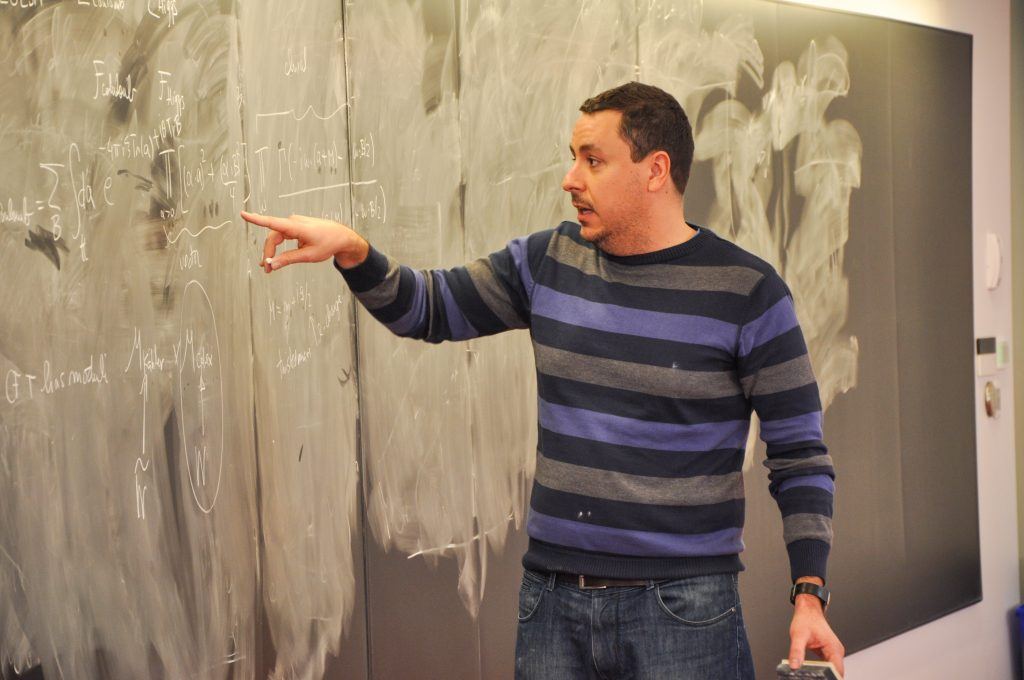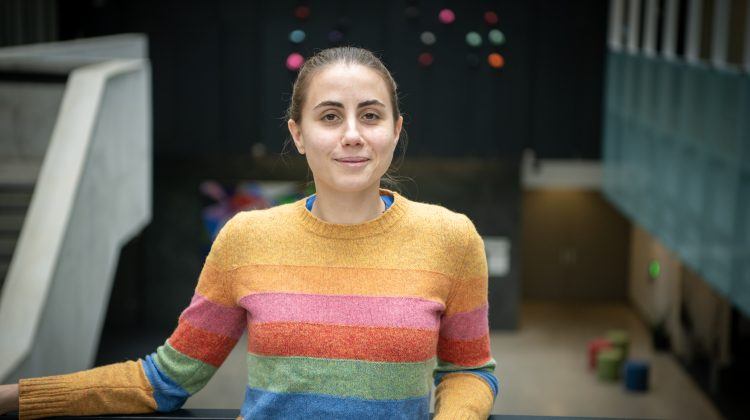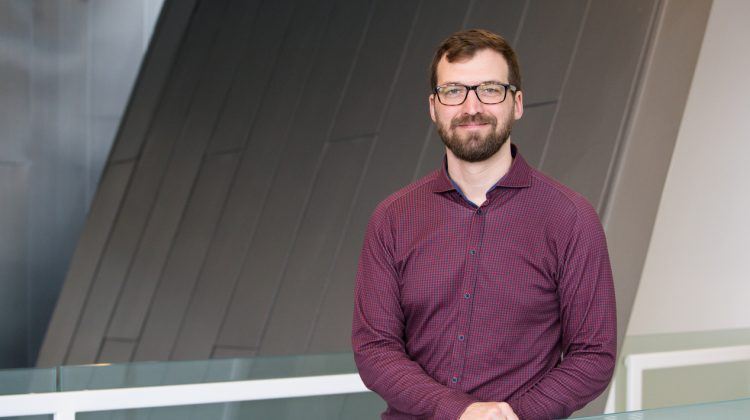A new milestone in the hidden world of low-energy physics
Perimeter researchers have established a new framework for determining whether any 2D quantum chromodynamic theory is gapped or gapless, offering insights into the dynamics of low-energy particle interactions that were previously out of reach.

In quantum chromodynamics (QCD) – the theory that explains the behaviour of quarks and gluons – low-energy, long-distance physics is particularly challenging. The usual tools and intuitions physicists use are insufficient.
But researchers aren’t entirely wandering in the dark. They have some clues. The trick is to piece them together.
“It’s a bit like being a detective,” says Perimeter Faculty member Jaume Gomis.
Gomis and two former Perimeter PhD students, Diego Delmastro and Matthew Yu, are seeking to understand the dynamics of low-energy QCD, which evades explanation with existing tools like perturbation theory (a method for simplifying complex particle interactions). At low energies, strong coupling – powerful particle interactions that allow quantum fluctuations to dominate the system – can make perturbation theory ineffective, forcing researchers to seek out alternative methods.
Gomis and his colleagues recently made a significant step forward using a particular feature of quantum mechanics known as a “mass gap.”

Looking for mass gaps in QCD
Multiple QCD theories plausibly explain phenomena like how quarks and gluons bind inside protons and neutrons. In these kinds of high-energy, short-distance scenarios, these theories are all roughly equivalent, but they can differ vastly in their implications for low energies and long distances.
“Some theories are very surprising. What comes out may look nothing at all like what you put in,” says Gomis. “You can begin with massless particles at high energies and end up with a zoo of massive ones at low energies, with strong quantum fluctuations messing everything up.”
To understand how a particular QCD theory might act at low energies, helpful clues may be hidden in the mass gap.
Physicists model particles as excitations in an invisible field that permeates the universe. If a theory features a gap between the lowest possible energy level of the field – the ground state or vacuum state – and the first excited state, it has a mass gap.
With a mass gap, adding energy into the field has no effect until you cross the gap, creating a particle. A “gapless system,” on the other hand, would create particles and particle interactions at all energy levels – meaning, among other things, that it’s possible to produce massless particles.
The physics of a particular field theory depends heavily on whether the theory includes a gap or not.
Being able to distinguish which theories are gapped and which are not is invaluable, given how intensely it affects the behaviour of a system. This is especially true for experimental physicists trying to design experiments to detect certain interactions. The first thing they want to know is: What is the range of possible interactions? And that’s determined by the mass gap.

Building a complete gapped/gapless catalogue
In recent years, Gomis and his colleagues have narrowed down the conditions that signal the likelihood of a theory being gapped. Currently, they’re working with 2D models.
“We realized we could actually do something quite special in two dimensions,” says Gomis. “We could completely solve the problem, to the extent that there’s a table with all the theories that are gapped and those that are gapless. We gave a complete list. That seemed completely out of reach a few years ago.”
Their work went further, providing a broad description of the low-energy dynamics for each 2D theory. It is a valuable result, and a resource for future exploration of low-energy physics where strong coupling makes perturbation theory ineffective.
Some of the techniques they used were old fashioned – methods that physics students have practised for a century or more, like analyzing Hamiltonians and wave functions. Gomis and his colleagues mapped the mass gap problem to a geometric classification proposed a century ago by mathematician Élie Cartan, which proved a useful framework for addressing the problem.
Another technique involved matching ‘t Hooft anomalies. Named after Dutch Nobel Prize winner Gerard ‘t Hooft, these are special limitations that present in some theories. Such anomalies are global, regardless of scale. That means that if the anomalies show up in high-energy scenarios, they must also be present in low-energy ones. And if they are present, they imply the existence of massless particles.
“This was a step towards establishing a set of sufficient conditions for a theory to be gapless,” says Gomis. “You don’t even have to get off the couch. If you formulate it in this way, you can immediately rule out whether a given theory is gapped. Now, that’s not sufficient yet, because you can’t do this for theories without ‘t Hooft anomalies. There, you need different methods to answer the question.”
Using all these tools together, Gomis and his team were able to build a complete table, categorizing every possible 2D theory of QCD as either gapped or gapless.
“We just followed all the clues logically, like a detective story,” says Gomis.
What’s next?
Gomis plans to bring their 2D toolkit to QCD theories in three and four dimensions. Higher dimensions present different challenges, but now they have a launchpad. The quest to delineate gapped theories from gapless ones at low energies has progressed considerably.
Gomis ultimately hopes his work will unveil areas of physics that have previously been shrouded from sight.
“I’m interested in understanding the laws of nature at the most fundamental level, where the usual intuitions and tools don’t apply,” he says. “It’s not about solving one particular theory, but rather learning what phenomena are allowed by the crazy rules of quantum mechanics. I want to understand what the universe allows.”
























































































